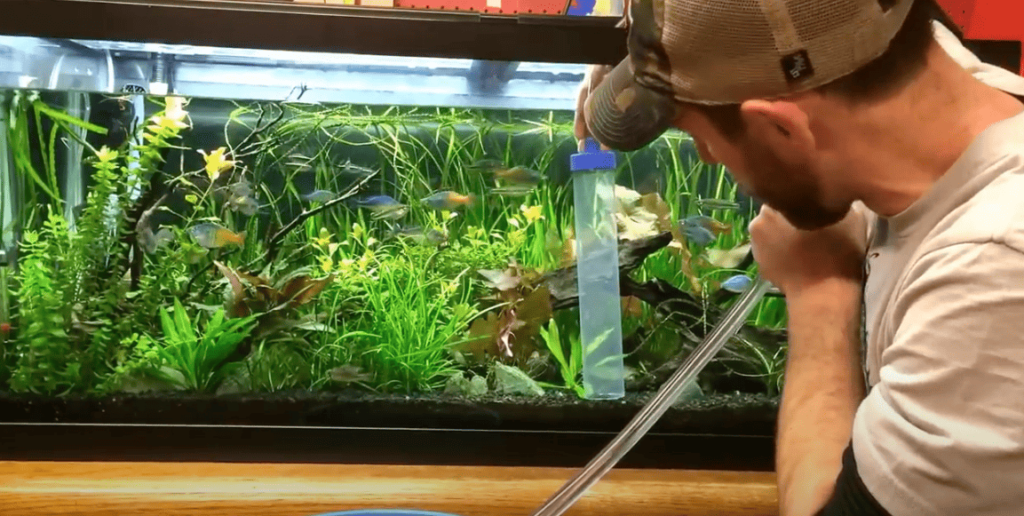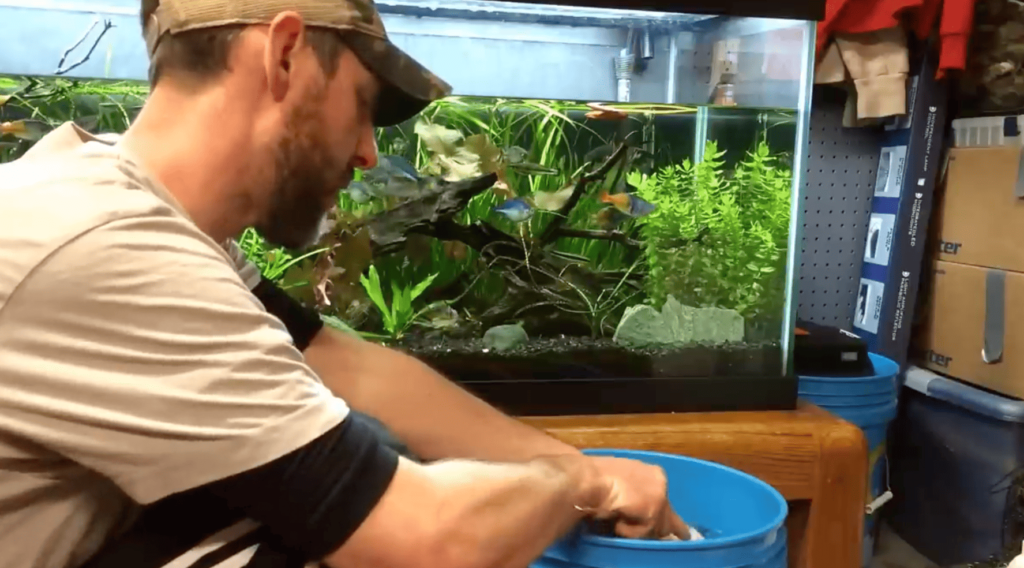Hi YouTube! Mike from Mass here, from Mass Aquariums. Tonight, I want to do a step-by-step guide on how to perform a proper water change for your aquarium. This video is especially for beginners who might not know the best practices yet. Let’s get started!
Things You’ll Need:
- Gravel Vac: A must-have for removing debris without the hassle. Use a small pump to start the siphon instead of sucking water out manually.
- Glass Scraper: A sponge for light debris and a razor blade for tougher algae like green spot algae.
- Scissors: Ideal for trimming plants and removing dead leaves during the process.
- Tongs: Useful for planting or retrieving objects without sticking your hands into the tank.
- Buckets: For collecting removed water.
- Pipe Cleaner: To clean the filter intake and outtake
Preparation
- Unplug Everything: Before starting, unplug all devices—heater, filter, and pumps. If you have everything on a power strip, just turn it off.

Removing Water
- I recommend removing only 20-30% of the water, even less if your tank is balanced. Over-draining can stress the ecosystem.
- Use the gravel vac to remove detritus but avoid over-vacuuming if you have dirt substrate to prevent disturbing beneficial bacteria.

Cleaning the Tank
- Use your algae brush and razor to clean the glass, targeting visible debris and algae.
- Trim plants and remove dead leaves or propagate as needed.
- Collect floating debris using the gravel vac or tongs.

Filter Maintenance
- Clean your filter intake and outtake with a pipe cleaner. Use the water you removed from the tank to rinse these parts. This ensures proper flow and prevents clogs.

Refilling the Tank
- Use a Python or similar system to refill your tank. Match the water temperature to the tank’s current temperature. I use an electronic thermometer to ensure accuracy.
- Keep the water flow above the waterline to aerate the new water.

Adding Water Conditioner
- Add your dechlorinator or stress coat product during the refill. Dose for the entire tank volume, not just the amount of water removed
Final Steps
- Once the tank is full, reconnect and plug in all equipment. Double-check everything is functioning correctly.
Key Tips:
- Never Leave Your Tank During Refilling: Always stay close to avoid overflows.
- Frequency: Perform this routine weekly to keep your tank in top shape.
- Regular Maintenance: A quick clean during each water change can prevent major issues later.






